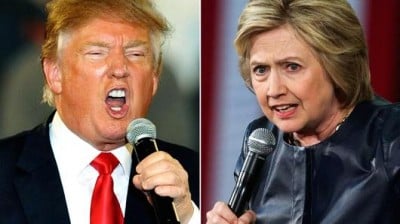No Winner: What Happens If the Presidential Election is Close?

It was 1:30 a.m. and CBS still wasn’t ready to call Ohio’s 20 electoral votes, or the presidential election, for George W. Bush. In Washington, Karl Rove was already declaring victory. But unlike 2000, when Al Gore almost conceded before it was clear that Florida deserved a recount, the Democrats were not rolling over this time.
For a while in November 2004, it looked like the counting could go on for weeks. As expected, Bush had swept the southern and mountain states, while John Kerry carried most of the two coasts. The President was leading in the popular vote, but neither candidate could claim the required electoral college majority.
As it emerged that Ohio might be the new Florida, ABC’s Cokie Roberts complained, “This could be the worst of all possible worlds.” She meant the prospect of extended litigation. Bush was ahead, but the Democrat were challenging Republican tactics and holding out for the counting of provisional ballots, a process that could take at least a week. Republican operatives called the tactic “bizarre, absurd, and ludicrous.” This year they may copy it.
Commenting on the high 2004 turnout, George Will offered a disquieting Vietnam analogy. “When we have high turnout we tend to be an unhappy country,” he argued, then adding that 1968 “was one of the worst years in US history. It ran up turnout, but I don’t think we want to do that constantly.”
State ballot initiatives were also influential, mainly bringing out social conservatives who tended to back Bush. Items calling for the rejection of same-sex marriage passed convincingly in 11 states; of these, nine went for Bush. In this sense, 2016 will be very different. The marriage debate is basically over, but five states will vote on recreational marijuana; another four will choose whether to permit its medical use. Four states are also voting to raise the minimum wage, and three will decide on background checks for gun buyers.
Still, one dynamic has stayed very much the same. It remains a closely divided electorate. As Chris Matthews put it in 2004, “It’s an election between north and south that will be decided by the Midwest.”
Using CNN’s new high-tech wall of graphics, Jeff Greenfield posed various scenarios, including the possibility of a 269-269 tie. That prospect, an irresistible storyline that has emerged again this year, lingered into the night. Would the House of Representatives end up choosing the President? And if someone like that happened now, who would the GOP-dominated House choose?
As the night wore on, speculation began to pass for fact. Shortly after 1 a.m., MSNBC announced that Bush was only one electoral vote shy of victory, while Kerry would have to win every remaining state to reach a tie. Actually, Bush had substantially fewer electors tied up at that point. The desire for an exciting story had eclipsed pre-election promises of caution.
By dawn the next morning, Bush actually had 254 electoral votes to Kerry’s 252. That left Iowa and New Mexico, two states where Bush was clinging to a slim lead, and Ohio, where the likelihood of a Kerry victory looked slim. Kerry conceded by early afternoon. If something similar happens this time, no one expects either candidate to say uncle.
Whatever the outcome, there will be deep suspicions and lingering claims of fraud and manipulation. That certainly happened in 2004, when claims of cyber-warfare surfaced after the vote. The difference now is Trump, who will use any opening or legal option to block defeat and challenge the legitimacy of the election.

